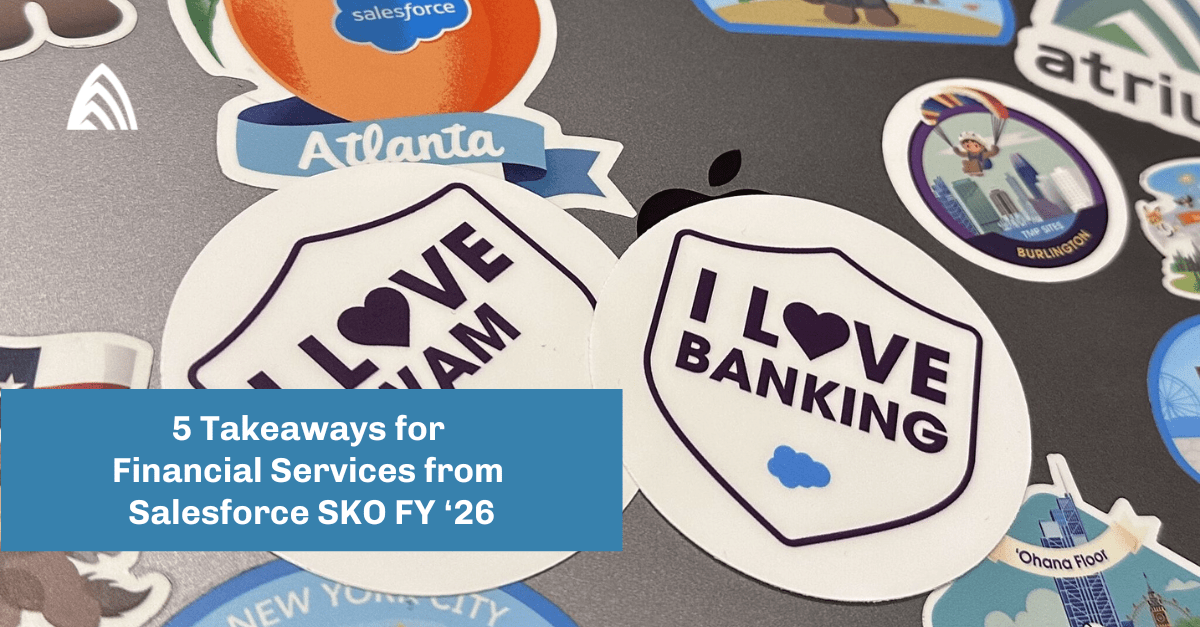Should you have a separate Salesforce org for wealth management or should you integrate it into your financial institution’s overall Salesforce org? It’s a question many financial institutions find themselves asking.
One thing is certain though: every financial institution requires a CRM, and Salesforce Financial Services Cloud stands out as the best choice. Designed specifically for financial services companies (i.e., banks, insurance, wealth management firms, and mortgage companies), the platform was designed to drive stronger client relationships, seamless integration with essential systems to enhance user adoption, and the ability to provide personalized, proactive service that goes above and beyond.
As far as the decision whether to integrate or not to integrate? The best approach for your firm depends on a number of factors, including the business’s specific needs.
Benefits of a separate CRM for wealth management
At the most basic level, having an org specifically for wealth management can provide several benefits, such as specialized features tailored to wealth management, data segregation for enhanced security and privacy, and dedicated tools for compliance and reporting. This option is sometimes available to a financial institution directly by a broker-dealer or clearing firm.
Benefits of integrating wealth management into your financial institution’s overall CRM
Although a separate CRM for wealth management allows for a focused and customized approach to managing financial portfolios, it can be limiting. Integrating a wealth management program’s CRM into the institution’s overall CRM system can offer advantages such as a comprehensive view of the client, streamlined operations, improved client service, and enhanced reporting and analytics capabilities. It facilitates a holistic approach to client relationship management and seamlessly integrates wealth management activities with other banking services.
Factors for determining which strategy is right for your organization
To determine which strategy is better, a financial institution should consult with a variety of stakeholders, including technology experts, implementation partners, and wealth management professionals. It’s useful to think through the following considerations as well.
Business needs assessment and system compatibility
- Assess the specific requirements and objectives of the wealth management division.
- Evaluate the compatibility of the existing CRM system’s specialized features and functionalities, such as those that come standard with Financial Services Cloud for banking or wealth management.
Data management and operational efficiency
- Evaluate the data segregation, privacy level, and regulatory compliance needs while also assessing the potential advantages and disadvantages of integration.
- Consider how integration can streamline operations, improve data sharing, and enhance client service.
Cost and resource evaluation
- Analyze the financial and resource implications, including implementation costs, training requirements, ongoing maintenance, and support.
The decision should be based on analyzing these factors and aligning them with the financial institution’s strategic goals, regulatory requirements, and client expectations.
Where does Salesforce Financial Services Cloud factor in?
Given its numerous product benefits, a strong argument exists for fully integrating a wealth program into a firm-wide CRM like Financial Services Cloud. These benefits include streamlined client experiences, enhanced relationship management, operational efficiency, improved compliance, and strategic business insights. Through this integration, financial institutions can harness valuable insights and analytics to drive informed decision-making and identify growth opportunities.
4 reasons to fully integrate your CRM today
In thinking through your approach, there are several reasons you might consider fully integrating your CRM, bringing wealth management into the greater financial institution’s org.
1. Unified data and client profile with strategic business insights
With a comprehensive picture of clients’ financial goals, preferences, and risk tolerance, advisors can offer tailored investment strategies and financial solutions, enhancing the wealth management client experience. A single access point to all client data ensures consistency and streamlines processes by eliminating the need for multiple platforms or systems. And by leveraging data analytics and reporting tools, financial institutions can better understand client behaviors, investment trends, and market dynamics.
This knowledge empowers institutions to develop targeted marketing campaigns, refine product offerings, and make data-driven business decisions. Furthermore, the integration enables comprehensive reporting on key performance indicators, enabling management to evaluate the success of wealth management initiatives and optimize resource allocation.
2. Enhanced relationship management
With a 360-degree view of clients’ banking relationships, investments, and interactions, advisors and bankers can identify cross-selling opportunities, send internal referrals to other lines of business, or recommend appropriate financial products and services. Seamless integration allows relationship team members to have meaningful conversations, manage important life events and milestones, proactively address client goals, and foster long-term loyalty. Centralizing client information allows for quick access to historical data, progress tracking, and providing personalized guidance — all of which results in more effective relationship management.
3. Efficient operations and collaboration
Integrating a wealth program into a firm-wide CRM eliminates the need for separate systems. This unification also enhances operational efficiency by automating various processes, including client onboarding, investment profiling, and portfolio monitoring. As a result, errors, duplications, and delays in data synchronization are reduced, allowing advisors to concentrate on delivering exceptional service rather than administrative tasks.
A unified CRM platform, rather than a separate CRM for wealth management, also encourages seamless collaboration across different departments, such as commercial lending, retail banking, wealth management, mortgage, and client contact support, promoting a holistic approach to client service.
4. Compliance and risk management
In the financial industry, adherence to regulatory requirements is paramount. Integrating a wealth program into a firm-wide CRM enhances compliance and risk management capabilities. Centralizing client data makes monitoring investment suitability and conflicts of interest, as well as ensuring compliance with regulatory guidelines, much easier. It also allows for efficient audit trails, reporting, and oversight, mitigating potential risks and improving regulatory compliance. Several security features facilitate robust data security measures, safeguarding sensitive client information and maintaining the highest data privacy standards.
CRM unification leads to a variety of wealth management client experience and business benefits
By combining banking and wealth management services into a single, unified platform, financial institutions can unlock significant benefits, provide exceptional services to their clients, and stay competitive in the dynamic world of finance.
At Atrium, we can help guide you on the journey toward a fully integrated, successful wealth management division. It takes a trusted partner to shift your institution’s approach to relationship management, ensuring your competitiveness in the ever-evolving finance landscape.
Take the first step today and contact us to schedule a consultation.








